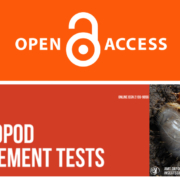Transcriptome profiling of two olive cultivars in response to infection by the CoDiRO strain of Xylella fastidiosa subsp. pauca
Authors: Giampetruzzi A., Morelli M., Saponari M., Loconsole G., Chiumenti M., Boscia D., Savino V.N., Martelli G.P. and Saldarelli P.
Type of contribution: Journal Article
Journal: BMC Genomics 2016, 17
Publication date: 27-06-2016
Page: 475
DOI: 10.1186/s12864-016-2833-9
Keywords: Xylella, De novo assembly, Transcriptome, Olive, Xylem, Tolerance, Differentially expressed genes, LRR, RLK, ABA
Corresponding author: Pasquale Saldarelli, CNR-IPSP
Abstract
Background
The recent Xylella fastidiosa subsp. pauca (Xfp) outbreak in olive (Olea europaea) groves in southern Italy is causing a destructive disease denoted Olive Quick Decline Syndrome (OQDS). Field observations disclosed that Xfp-infected plants of cv. Leccino show much milder symptoms, than the more widely grown and highly susceptible cv. Ogliarola salentina. To determine whether these field observations underlie a tolerant condition of cv. Leccino, which could be exploited for lessening the economic impact of the disease on the local olive industry, transcriptional changes occurring in plants of the two cultivars affected by Xfp were investigated.
Results
A global quantitative transcriptome profiling comparing susceptible (Ogliarola salentina) and tolerant (Leccino) olive cultivars, infected or not by Xfp, was done on messenger RNA (mRNAs) extracted from xylem tissues. The study revealed that 659 and 447 genes were differentially regulated in cvs Leccino and Ogliarola upon Xfp infection, respectively, whereas 512 genes were altered when the transcriptome of both infected cultivars was compared. Analysis of these differentially expressed genes (DEGs) shows that the presence of Xfp is perceived by the plants of both cultivars, in which it triggers a differential response strongly involving the cell wall. Up-regulation of genes encoding receptor-like kinases (RLK) and receptor-like proteins (RLP) is the predominant response of cv. Leccino, which is missing in cv. Ogliarola salentina. Moreover, both cultivars react with a strong re-modelling of cell wall proteins. These data suggest that Xfp elicits a different transcriptome response in the two cultivars, which determines a lower pathogen concentration in cv. Leccino and indicates that this cultivar may harbor genetic constituents and/or regulatory elements which counteract Xfp infection.
Conclusions
Collectively these findings suggest that cv. Leccino is endowed with an intrinsic tolerance to Xfp, which makes it eligible for further studies aiming at investigating molecular basis and pathways modulating its different defense response.









